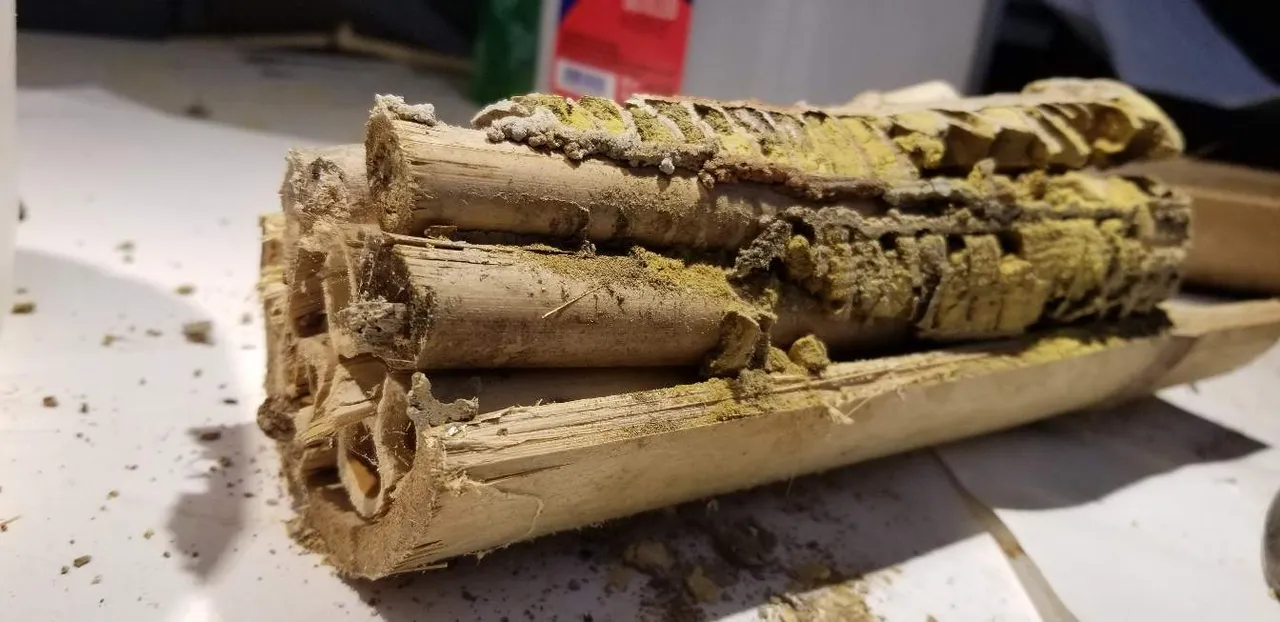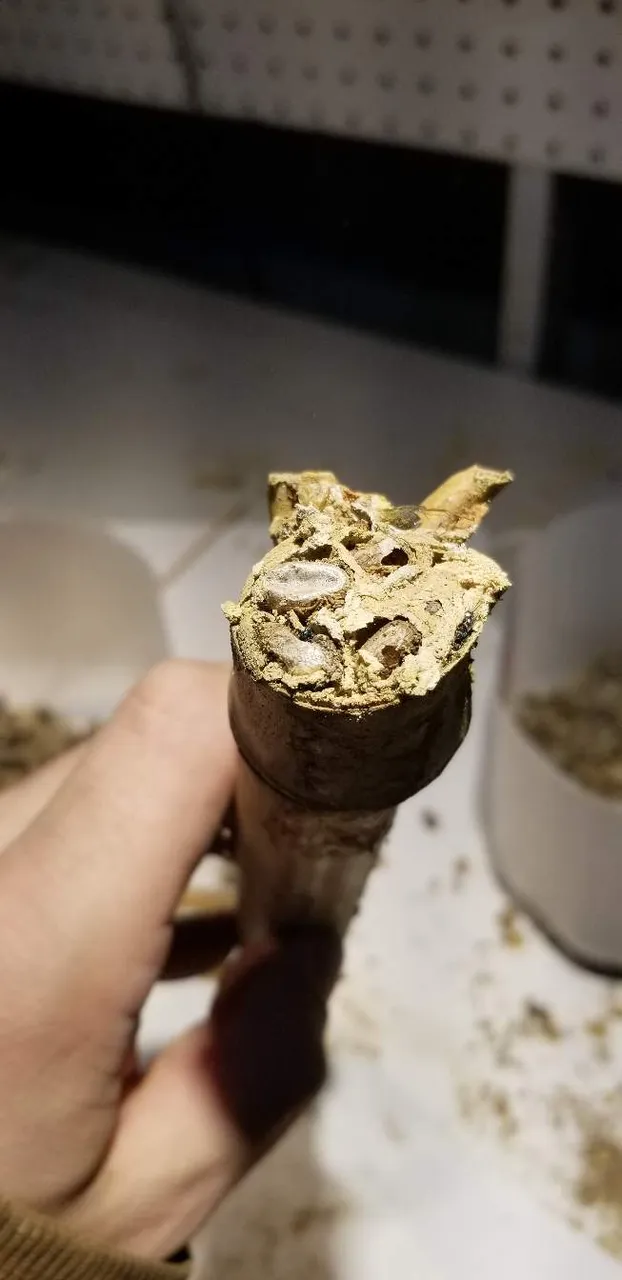In the early Spring female solitary Bees were busy building homes for their offspring. I took some Bamboo I had sitting around and cut them into big and small pieces.

The Mason Bees laid their larvae and left pollen pellets inside and sealed up the tubes. These bees will leave up to thirty larva in a Bamboo tube sometimes.

It would seem the Bees ran out of space in the tubes by late spring. And started building homes on the inside of the big bamboo tubes. I was not expecting that. The yellow stuff is pollen and the grey stuff is mud placed there by the Bees.

The cells the Mason Bees build with mud are quite impressive. And I am amazed how much pollen they add to each cell. They do this to feed the larva that will eventually spin itself into a cocoon.

The Bees packed mud in so well I had to cut open the big Bamboo tubes just to get to the smaller ones. Those bean like things are cocoons with a single Bee in each. The larva spun them and now they are waiting for a streak of warm days to emerge.

Before breaking open the tubes they look like the above.

Once cracked open I can get to the smaller reeds the Bees lay their larva in.

Once open I then cut the little Bamboo reeds open and collect the cocoons.

The Bees even laid larva in the back of the Bamboo reeds.. hah any space they found they filled.

Breaking them open is alot of work and not a very clean way of handling them. So my Bee boards should make this alot easier next harvest.

The Bamboo reeds are disposed of after looking like burst open shells to me.

I usually try to dump the cocoons on a piece of paper and then collect them and drop them into a container for cleaning afterwards.

Sometimes pests get to the coons before I can clean them out, the half empty shells are a sign of trouble. Luckily most of the cocoons found were okay.

Sometimes its Mites, other times its Gnat sized Wasps. But seems there are things that go after the Bees out there. Maybe next year I should harvest earlier and not in January like I did this year.

Over a few hours I collect close to a hundred and only processed about a third of what I have so far. Looks like I'll have alot of Bees that will emerge in the Spring. Hope my care for them will be good enough.
I wash them and dry them once collected, will detail that in a future post.
